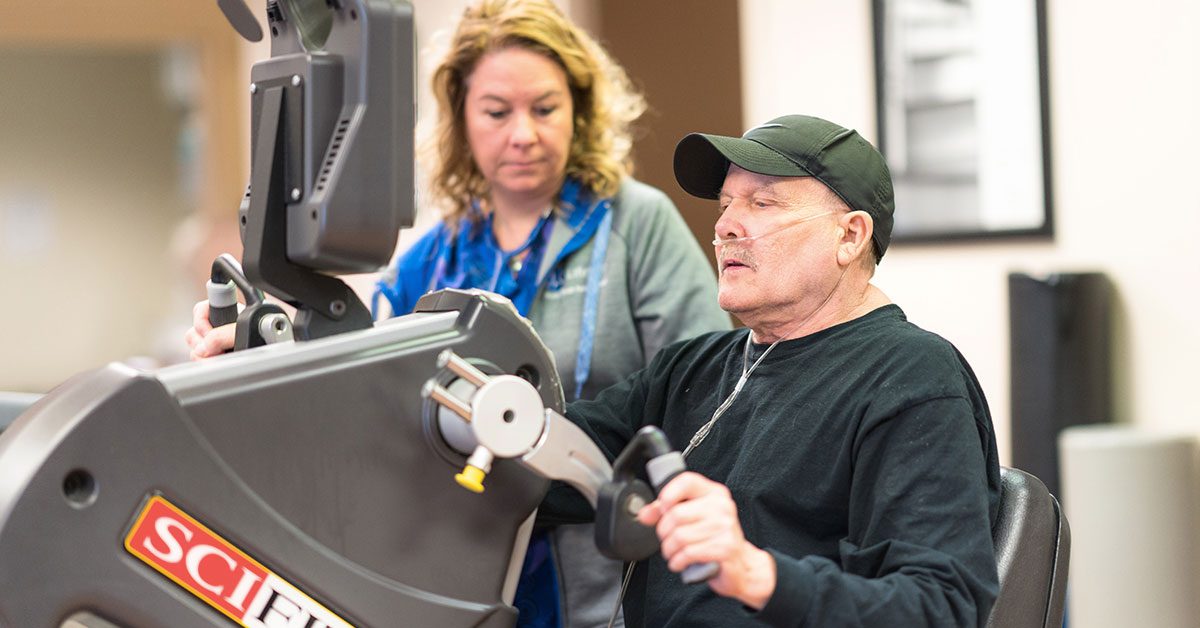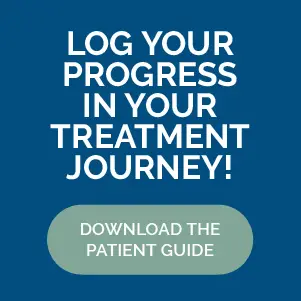Pulmonary rehab is designed to get you breathing easier.
Anyone with a pulmonary diagnosis and regular symptoms such as shortness of breath (with or without exertion), coughing, sputum production, and fatigue can benefit from pulmonary rehabilitation.
Rehab is an important part of the management and health maintenance of people with chronic lung disease who continue to have decreased lung function despite standard medical treatment.
Pulmonary rehab is a first line treatment in the management of various lung diseases including:
- COPD which encompasses:
- Asthma
- Emphysema
- Chronic Bronchitis
- Pulmonary Fibrosis
- Post COVID-19, Long COVID, or Post-COVID Syndrome
- Lung Cancer
- Pneumonia
- Pulmonary Hypertension
- Persons undergoing lung surgery, such as a transplant, should attend pulmonary rehabilitation both pre- and post-operatively.
What is Pulmonary Rehab?
Pulmonary rehabilitation is a full-circle program, with you, the patient, driving the progress. The program provides you with a complete assessment, treatment, and education on your condition to give you tools to manage your symptoms. It can take place in either a hospital or an outpatient setting.
Why is Pulmonary Rehab Important?
For many, chronic lung conditions can stop a normally active person in their tracks. Rehabilitation following a pulmonary diagnosis can improve lung function, help you avoid triggers that exacerbate symptoms, and improve your quality of life to better support your whole health. Learning how to manage symptoms will help you set a foundation for a healthier you.
Who Is Involved in Pulmonary Rehab?
Rehab starts with you, but involves a whole team dedicated to your success.
This team of healthcare providers can include:
- Respiratory Therapists- licensed professionals who specialize in assessing and treating breathing problems.
- Physical Therapists– licensed professionals who are movement experts. They diagnose and treat clients with health related conditions that limit their ability to function.
- Social Services- serve as an advocate of the patient for equipment or services to support the whole health of the patient. They are also licensed to provide emotional support, especially after receiving the diagnosis of a pulmonary disease.
- Doctors- lead the pulmonary healthcare team to ensure all aspects of a patient’s program are collectively considered when determining appropriate treatments.
These healthcare providers work with you to help improve your symptoms. They collaborate and determine the best techniques to increase your tolerance for daily activities.
What Does Pulmonary Rehab Program Involve?
Pulmonary rehabilitation is usually an 8 to 12 week program. Attending 2 to 3 times weekly will maximize the benefits of the treatments being provided.
During your initial visit, you will be asked questions about your past medical history, your lung condition, and any symptoms you may be experiencing. A full examination will include looking at vital signs, range of motion, strength, endurance and balance to best determine a plan specific to your needs.
Pulmonary Rehab Goals
Pulmonary rehabilitation is a lot of fun. You will learn:
- How to control your shortness of breath
- Self-monitoring tactics
- How to improve your energy levels and activity tolerance
- Symptom Management
- How to take your medications correctly (including oxygen)
Because a patient’s life doesn’t just occur in the clinical setting, rehabilitation focuses on activities of daily life and promotes independence as long as possible.
Pulmonary Rehab Exercises
You will learn many strategies and exercises in pulmonary rehabilitation to support your independence including:
- Breathing Techniques
- Pursed-Lips Breathing
- Diaphragmatic Breathing
- Aerobic exercises
- Stretching / flexibility exercises
- Strength training
- Postural exercises
- Coughing techniques
- Breathless positioning
Measuring Pulmonary Rehab Success
During your initial rehab session, you will complete a series of questionnaires and physical tests to establish a baseline measure of how much exercise you can tolerate. These assessments are revisited periodically throughout your program and compared to your initial results.
The most important key to pulmonary rehab success is to practice what you learn in your daily life. Keep active when you’re not being monitored and follow all prescriptions and instructions according to your respiratory plan.
Finding a Pulmonary Rehabilitation Program
Pulmonary rehabilitation requires a referral from a doctor. This can be your primary care physician, a pulmonologist, or a cardiologist. Your doctor will review your current state of health and your lung function test results. They should discuss your current activity level, ability to do the things you want to do, as well as your willingness and ability to attend. Once you have a referral, you will be scheduled for an initial evaluation.
Lifeline Physical Therapy offers a multi-disciplinary pulmonary rehabilitation program. This means, we are able to address over many aspects of your life affected by your chronic lung condition. Contact us today to schedule an appointment.


